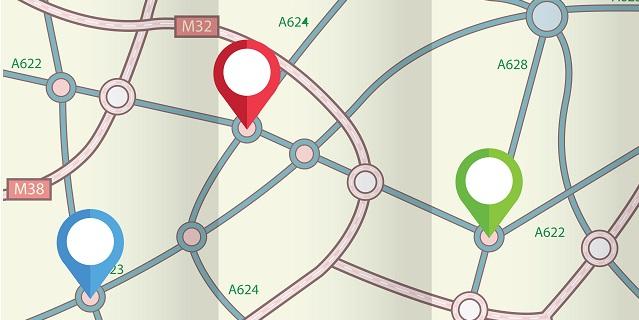Regionalized STEMI Care Has Not Impacted NSTEMI Outcomes in California
The results beg the question of whether conditions like cardiac arrest and cardiogenic shock may benefit from regionalized care.

The effects of regionalized STEMI treatment protocols do not seem to have positively or negatively affected patients diagnosed with NSTEMI, according to new California registry data.
The widespread success of these protocols, which assist emergency medical services (EMS) in triaging and transporting patients with suspected STEMI to best-suited hospitals, has been documented many times over by research showing quicker treatment and lower mortality.
Lead study author and emergency room physician Juan Carlos Montoy, MD, PhD (University of California, San Francisco), told TCTMD he’s seen many NSTEMI patients “swept up” in his city’s regionalization program. This made him curious to know whether their outcomes had changed over time.
While this did not turn out to be the case, Montoy said their data make it clear that “overall treatment and outcomes are improving.”
No Effect on NSTEMI
In their paper, published online January 20, 2021, in the Journal of the American Heart Association, Montoy and colleagues included all 293,589 NSTEMI patients receiving care in nonfederal emergency departments in California between January 2005 and September 2015. Overall, 73.2% of patients were treated in regionalized STEMI communities throughout the study, and by 2014 all communities had been regionalized.
On multivariate analysis, STEMI regionalization did not have an effect on whether an NSTEMI patient underwent angiography, although the probability of angiography increased by 0.5% annually throughout the study regardless of regionalization status.
Additionally, mortality rates after NSTEMI decreased consistently over time, again with no relationship to regionalization. Interestingly, the risk of death was 3.7% higher for patients treated in PCI-capable hospitals.
“I had a hard time predicting which way the impacts would go,” Montoy said. “There was some potential for positive spillover effects, which is what I was hoping for—it would be great if we found that one intervention for one set of patients improved the treatment in outcomes for another group of patients. . . . But there was also the concern that this could negatively impact their care or outcomes if it leads to fragmented care. Imagine someone receiving care at one emergency department that's not part of their network and their home cardiologist isn’t connected to the team that takes care of them.”
Other Cardiac Emergencies?
Commenting on the study for TCTMD, Harold Dauerman, MD (University of Vermont Medical Center, Burlington), said he was not surprised to see STEMI care had no effect on NSTEMI outcomes, given that “NSTEMI is not a time-dependent emergency.”
STEMI regionalization programs were designed to improve metrics like door-in-door-out and first-medical-contact-to-device times. “On the other hand, with NSTEMI you don't measure the efficiency of care in minutes. You measure it in days,” Dauerman explained. “So I would be very surprised if STEMI regionalization had any impact on NSTEMI care for that reason alone.”
Additionally, he pointed to the notion that “NSTEMI is not a unique diagnosis and it's become even more diverse over the last 15 years. Many patients with NSTEMI have type 2 myocardial infarction, myocardial injury, spontaneous coronary artery dissection, myocarditis—all etiologies which don't benefit from early PCI within 72 hours. This is very different than STEMI, where over 90% of the cases are due to coronary occlusion related to plaque rupture. So the mandate to do PCI is much, much higher in a STEMI population than in a NSTEMI.”
Dauerman said he would have liked to see other time-dependent emergencies used as the comparator group in this study. “For example, cardiac arrest, cardiogenic shock, and stroke are all time-dependent emergencies, and I'd be very curious to see if quality of care and outcomes improved in those other diagnoses other than STEMI that have a similar need to be efficient, organized, and coordinated,” he commented.
Ultimately, “they show overall NSTEMI mortality as decreasing over time, STEMI regionalization has reached 100% in California, and that the use of early angiography within 72 hours is increasing over time. I think these are all positive messages and I'm not sure we can draw broader conclusions than that.”
The results, he added, do open up a question: “What other positive effects might you see on time-dependent emergencies like stroke, cardiac arrest, and cardiogenic shock?”
“That's the real question to answer as we start to talk about should we have regionalized shock programs and regionalized cardiac arrest programs,” Dauerman suggested. “Can you see benefit for regionalization already from what happened within the STEMI world?”
Removing the Silos
In an accompanying editorial, Michael Ward, MD, PhD (Vanderbilt University Medical Center, Nashville, TN), and Brahmajee Nallamothu, MD, MPH (University of Michigan, Ann Arbor), write that “the concept and rationale for regionalization is firmly grounded in existing programs for STEMI, trauma, acute ischemic stroke, and out-of-hospital cardiac arrest. But how we think about their spread may require us to take a step back.”
As opposed to individually constructing these programs in silos, it may be worthwhile to “reimagine regionalization as a building block to broader access to care for time-sensitive conditions,” they continue. “This could help us design and scale systems in a purposeful manner, so we can at least minimize the challenges that crosscut many conditions. . . . One can imagine that many components of a regionalized system for STEMI can be repurposed. However, the lesson of the article by Montoy et al is that such a formidable goal requires deliberate effort to realize.”
Montoy agreed. “I think it's important to consider these possible externalities any time we undertake any sort of large project to try to improve people's health,” he said. “My hope would be that as everything becomes more connected and policymakers, emergency medicine physicians, cardiologists, everyone is able to think about things on more of a population scale. That’s what's best to do for the overall population rather than focusing on one narrow slice.”
Another future hope for Montoy would be greater use of technology to guide EMS to provide even better care. “There are so many factors to consider like the resources available at a given emergency department or hospital. We tend to think of ‘Do they have a cath lab?’ ‘Is there a cardiologist on call?’ But also important is ‘How busy is this department?’ ‘Is there a bed available in this department?’” he said. “We're working on this in San Francisco, and it’s a tough challenge to try and do something where the data is updated in real time and we're getting patients to care quickly. . . . I would love to see a system that takes into account those factors in addition to what's the patient's medical home, what's the likelihood that they'll need an emergent intervention, et cetera.
Yael L. Maxwell is Senior Medical Journalist for TCTMD and Section Editor of TCTMD's Fellows Forum. She served as the inaugural…
Read Full BioSources
Montoy JCC, Shen Y-C, Brindis RG, et al. Impact of ST‐segment–elevation myocardial infarction regionalization programs on the treatment and outcomes of patients diagnosed with non–ST‐segment–elevation myocardial infarction. J Am Heart Assoc. 2021;10:e016932.
Ward MJ, Nallamothu BK. Building a better system through deliberate regionalization. J Am Heart Assoc. 2021;10:e020113.
Disclosures
- Research reported in this publication was supported by the National Heart, Lung, and Blood Institute of the National Institutes of Health.
- Montoy, Dauerman, Ward, and Nallamothu report no relevant conflicts of interest.





Comments